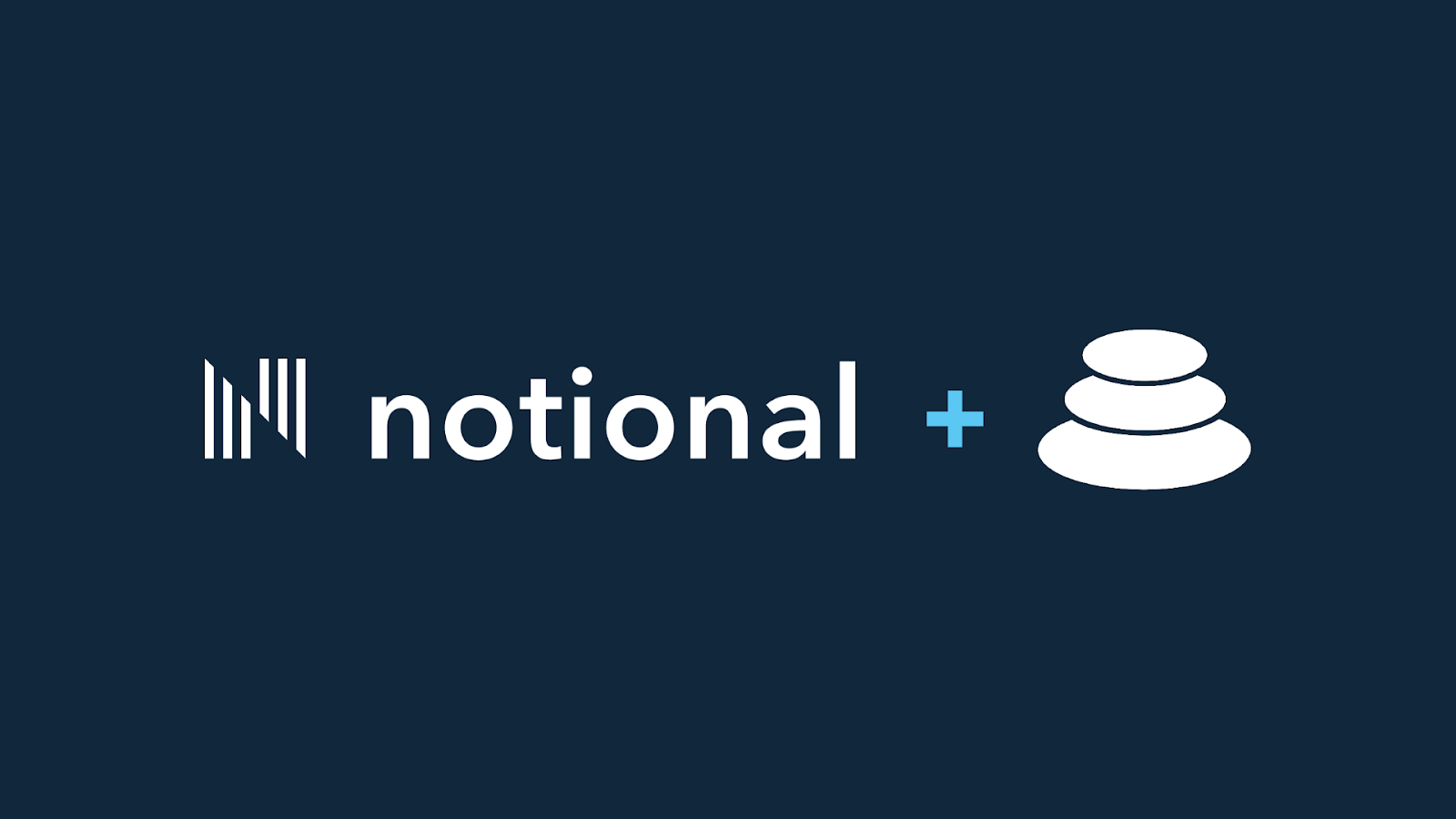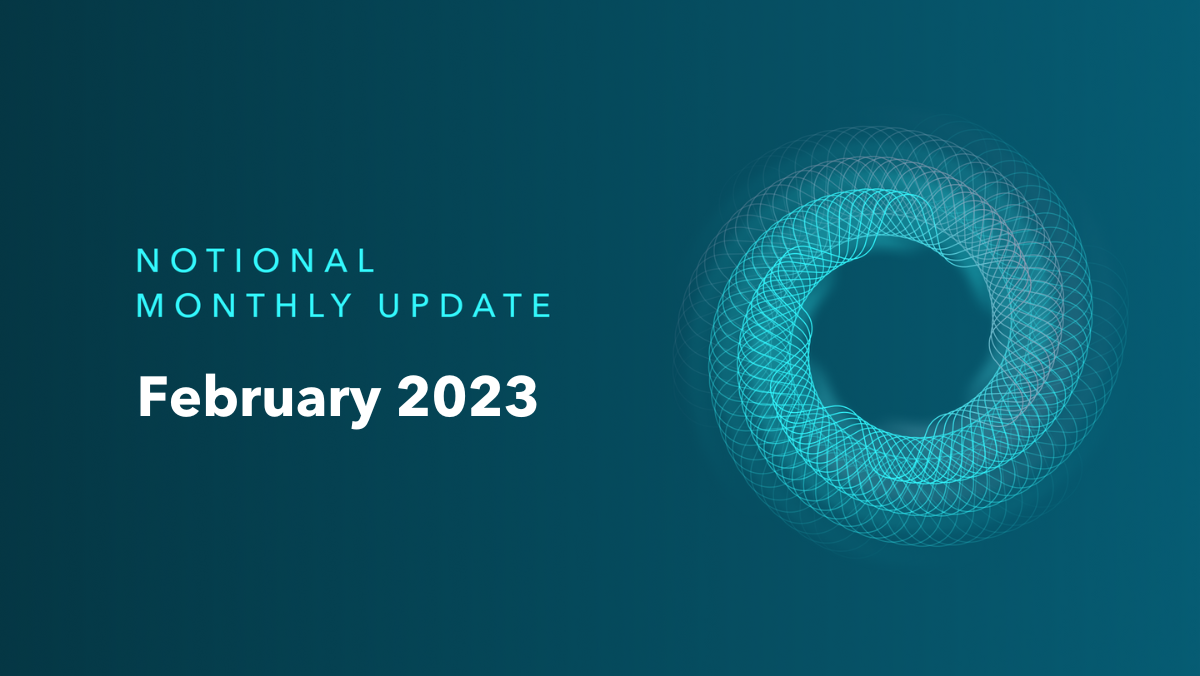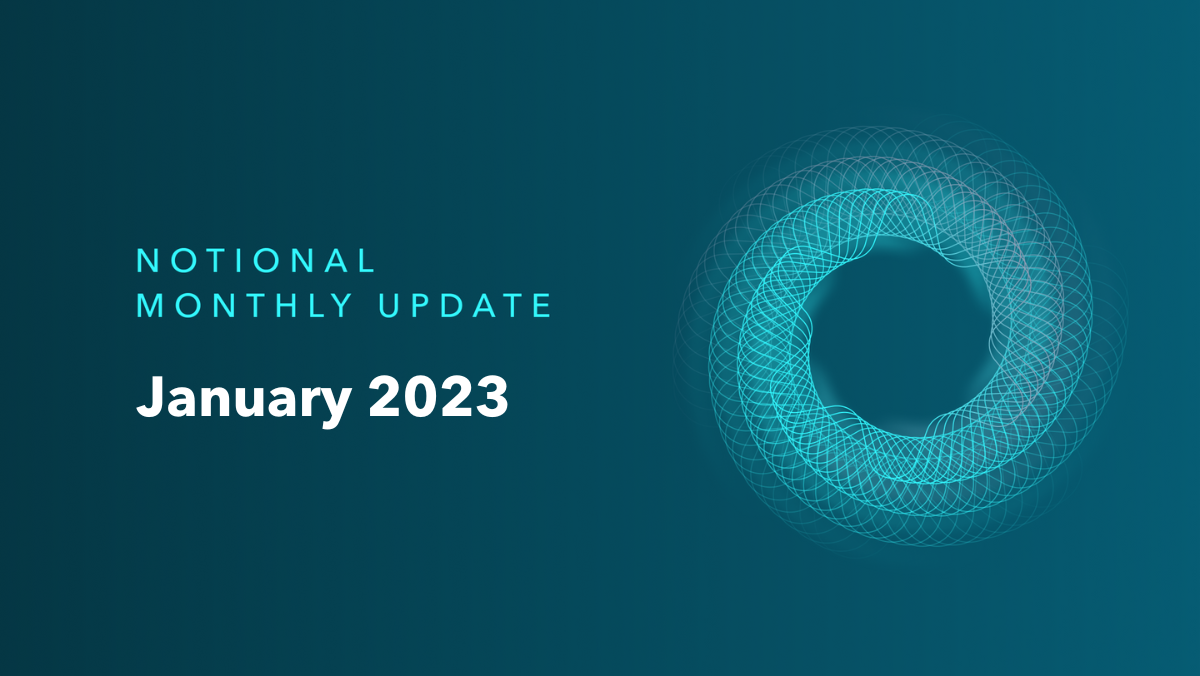
Notional Partner Spotlight: Balancer + Aura
Notional is focused on building highly efficient, secure, and scalable fixed rate tools for decentralized financial markets. Deep liquidity and asset flexibility is a crucial part of our long-term vision. Balancer is a leading AMM provider with unique trading tools, governance characteristics, and other features that support this vision. In this post, we’ll explore what Balancer is, how it works, and why.
Notional’s $NOTE staking safety module, which doubles as a trading liquidity pool is built on top of Balancer, and our first leveraged vault strategy also incorporates elements of the Balancer ecosystem. We’ll also explore Aura, a compelling governance and liquidity protocol that is built on top of Balancer and also involved in the leveraged vault launch strategy.
What is Balancer?
Balancer is a community-driven protocol, automated portfolio manager, liquidity provider, and price sensor that empowers decentralized exchange and the automated portfolio management of tokens on the Ethereum blockchain and other EVM-compatible systems. Balancer pools can be constructed with up to 8 assets in any ratio, ultimately providing far more versatility when compared to standard 50-50 AMM pools.
Balancer also allows for the automatic rebalancing of pools, effectively creating fully automated crypto-native index funds for users. Instead of paying fees to a broker to rebalance a given pool, the pools automatically collect fees as they’re rebalanced by traders looking to complete token swaps. Pools with a large variety of assets have access to even more opportunities to collect token fees.
So, how does rebalancing work? Balancer works in a similar fashion to other AMMs, but has some key differences. Balancer’s multi-weighted pools are built using an N-dimensional invariant surface which enables the unique properties of the AMM overall. A typical rebalancing flow looks like this:
- Imagine a balancer pool is set to hold 80% of its value in ETH and 20% in USDC (80/20 ETH/USDC Pool)
- When slippage in this ratio occurs due to trades, the pool will adjust token pricing to maintain its target ratio
- When a user wants to trade USDC for ETH, Balancer will aggregate its liquidity pools and search for the best available swap price
- Pools with improved pricing reflect those that require rebalancing; the trade is then executed between these matched pools to complete the trade and equalize the target ratios across the selected pools
As users execute trades on the platform, Balancer pools constantly adjust to maintain target weights. Increased trade volumes make the platform even more efficient in a positively reinforcing cycle - something that cannot necessarily be said about traditional portfolio balancing counterparts.
Balancer is governed by a recently released veToken model that has been quickly adopted by users. Both liquidity providers and token holders can lock their assets to receive veBAL tokens. For liquidity providers, users lock their 80/20 BAL/WETH BPTs (LP tokens) to receive veBAL governance tokens. BAL holders are able to lock their BAL over different time horizons to receive veBAL tokens. Allowing the locking of both BPTs and BAL tokens delivers a number of benefits to the protocol, including:
- Alignment: Users are incentivized to support liquidity over longer periods of time vs. speculating on shorter time horizons
- Fees: 75% of all fees generated by the protocol are proportionally distributed to veBAL holders
- Interoperability: Balancer is designed to support protocols that build on top of its veToken system, similar to Curve
Overall, Balancer provides a unique suite of tools to users looking for advanced liquidity features, flexible asset provision, and deep interoperability.
What is Aura?
Aura Finance is built on top of Balancer’s veToken governance model to maximize rewards for liquidity providers and token stakers. This is achieved through the incentivized aggregation of BAL tokens and BPTs via the AURA token. This model is similar to Convex’s approach to the Curve ecosystem with CVX.
Aura Finance creates a wrapped token, auraBAL, that is associated with 80/20 WETH/BAL BPT tokens. These tokens are locked for the longest possible amount of time to maximize rewards but remain liquid via the token wrapper. Users receive a proportional share of BAL, bbaUSD, and additional AURA token rewards. Like Convex for Curve, Aura provides several significant benefits to the Balancer ecosystem:
- Simplicity: Aura makes maximizing Balancer assets and interacting with the veToken governance model a seamless and rewarding experience
- Governance Integrity: Aura drives constantly growing locked BAL deposits and directly contributes to a more robust governance system for Balancer
- Liquidity: auraBAL allows the Balancer ecosystem to drive governance participation and deep BPT availability without users needing to sacrifice their own liquidity
Notional & The Balancer Ecosystem
Notional recognizes the powerful advantages that Balancer provides to decentralized finance applications. Consistent and deep liquidity is critical for Notional to support and execute fixed rate trades of all sizes. To do this, Notional incentivizes liquidity providers with platform fees and rewards issued in the native platform token, $NOTE. Additionally, NOTE stakers receive incentives in the form of reinvestments from protocol revenues, enabled via a Balancer pool.
To stake NOTE, users convert their NOTE into 80/20 NOTE/WETH Balancer LP tokens and receive sNOTE in return.
sNOTE rewards accrue in the form of Balancer LP tokens. This means that, absent any sNOTE redemptions, the sNOTE pool will hold an increasing number of LP tokens. As the pool accrues rewards, each sNOTE is redeemable for an ever-increasing number of LP tokens.
For Notional, this is a vast improvement over other liquidity pools today that are often structured as 50/50 pools. Balancer’s 80/20 pools allow for better capital efficiency and unique characteristics that evenly allocated pools cannot.
- Bootstrapping: Balancer pools allow protocols to optimally bootstrap liquidity by requiring a smaller amount of ETH/DAI to be allocated to a pool (or other counter-assets)
- Impermanent Loss Flexibility: Different pool weights, such as 80/20 or 95/5, carry different rates of impermanent loss that can be considerably more friendly to users executing swaps (a great example from Balancer’s CEO is available here)
- Exposure: Unevenly weighted pools allow for selective exposure to favored tokens without giving up fee earning potential
The recent release of Leveraged Vaults is another way Notional is interacting with the Balancer ecosystem. These vaults allow users to access advanced yield strategies that integrate fixed rates via whitelisted contracts and protocols.
Some of these strategies will integrate the Aura platform to earn users attractive leveraged yields while simultaneously enhancing the liquidity of the overall Notional and Balancer ecosystems. We’re excited for users to get access to these tools and are already working on new strategies that integrate additional Aura Finance capabilities.
Conclusion
The Balancer ecosystem is unique in terms of what it can provide to applications like Notional. We will continue to build in the Balancer ecosystem and deploy strategies that maximize the capabilities of 80/20 pools and Aura rewards for our users. In the meantime, be sure to follow us on Twitter, join the conversation in our Discord, and unlock start interacting with DeFi-native fixed rates on Notional Finance.
About Notional Finance📈
Notional is the #1 Ethereum-based protocol for borrowing and lending at fixed rates and fixed terms. With more than $650M in total fixed rate lending volume, Notional is now a top 10 lending protocol providing core DeFi infrastructure.
Notional’s latest product launch, leveraged vaults, is slated for Q3 2022. A new DeFi primitive built on fixed rate borrowing, leveraged vaults execute specific yield strategies while collateralizing the vault assets, allowing users to maximize capital efficiency by taking up to 10x leverage.
After raising a $10 million Series A in May 2021 from some of the top VC firms, including Coinbase Ventures, Notional’s protocol was relaunched on 11/1 with a host of new features as well as the $NOTE governance token. Notional is now a top 10 DeFi lending protocol with more than $675M in total lending volume.
To find out more, follow Notional on Twitter @NotionalFinance, subscribe to the newsletter, join the Discord, or check out the website to learn more.

Notional Finance Newsletter
Join the newsletter to receive the latest updates in your inbox.









